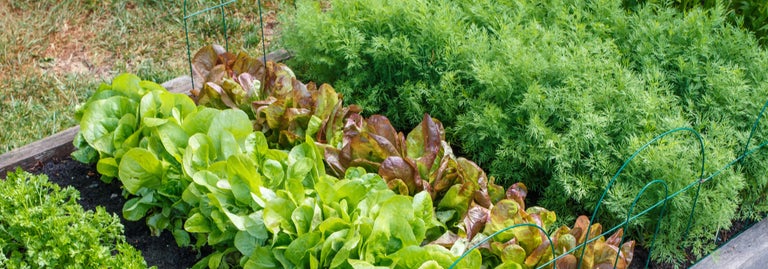This summer, the only footprints you should be leaving are the ones on our beautiful, pristine beaches. To reduce your spending and your carbon footprint, just follow Canstar’s 11 simple tips.
What’s a carbon footprint?
A carbon footprint is used to measure how a person’s lifestyle impacts climate change. It’s made up of the emissions associated with activities such as: how you get around, where you travel, how you power your home, what you eat, and what you buy.
How do I measure my carbon footprint?
Before working on how to reduce it, start by calculating your carbon footprint. There are free online tools to help you determine exactly how much you and your household are contributing to greenhouse gas emissions.
Auckland Council’s resource Future Fit has a great house calculator. It calculates your carbon footprint by estimating the carbon dioxide (CO2) emissions for a particular activity, as well as five other greenhouse gases, including methane and nitrous oxide, which also contribute to warming Earth.
To make things a little simpler, all the emissions are added together and expressed as a single number in terms of carbon dioxide equivalent (CO2-e). CO2-e is measured in kilograms or tonnes. And it’s calculated by multiplying the emissions of each of the six greenhouse gases by its 100-year global warming potential.
How to reduce your footprint at home
1. Plant trees in your garden
Plant trees at your place. As a rule of thumb, one New Zealand native tree species planted is the equivalent of removing 6kg of carbon dioxide from the atmosphere, per year.
Also, investing in native plants will attract birds and other wildlife to your property and community. Not only that, but planting trees is one of the best ways to filter the air and make our towns and cities more agreeable places to live.
2. Unplug, switch off
All of those electronic devices – TVs, computers, printers – that you leave plugged in are still pulling energy out of the wall. Even when they are in standby mode. So turn them off!
3. Drive less
It’s summer, the sun’s out and the air is warm. So get those walking shoes on folks. If it’s a trip you can walk, walk! Or, jump on your bike. Avoiding short journeys in your car will do the planet a massive favour.

4. Buy local and eat veggies
Transporting food across oceans uses huge amounts of fossil fuel for transportation and refrigeration. Whenever possible, purchase locally grown foods. And consider supporting a local farm/community growing initiative.
Make it a summer project to plant a backyard vegetable garden, or a container garden, to grow your own fresh food and herbs. Compost your food waste and use it in your garden.

5. Upgrade your electrics
Make sure your electrics are energy efficient. Check your heat pump is running smoothly as winter comes to an end. And check your oven and heating system, too. Older systems tend to use more energy and are harsher on the environment.
6. Wash and dry with the sun
Save more energy by washing clothes in cold water, only washing full loads, and using the eco cycle when possible. Ditch the dryer this summer for the clothesline. You’ll save energy, and your laundry will smell clean and fresh.
7. Switch your bulbs
LED bulbs use an estimated 75% to 90% less energy for the same amount of light than traditional incandescent bulbs. They also last 25 times longer. If you haven’t already replaced your old energy-hungry bulbs with LEDs, now’s the time!
8. Buy second hand
If you’re in the market for new summer dresses, shoes, hats, shorts, etc, look for them at an op-shop first. Avoid fast fashion – trendy, cheap clothing items that are in style one day and out the next.
The clothing choking our landfills is one of the fastest growing causes of waste in New Zealand. Every kilo of clothing that’s landfilled creates 3.6kg of greenhouse gases.

9. Reduce your food waste
The average Kiwi family wastes $560 per year on food that’s bought but never eaten. Cutting down on food waste is one of the biggest wins for your pocket and the planet. Start by planning just a few dinners in advance and shop little and often. Soon, it will become a habit, and forgotten food at the back of your fridge will become a thing of the past.
10. Install a low-flow showerhead
Low-flow showerheads help reduce hot water waste, but don’t lower the shower pressure, so still give you a good shower. A low-flow showerhead uses less than 6-10 litres of water a minute, compared with 10-20 litres for an ordinary showerhead. Taking shorter showers helps, too, which is far easier in summer than on chilly winter mornings. It’ll save you coin and be easier on the planet.
11. Consider your electricity provider
The good news is that over 80% of NZ’s electricity is renewably generated, according to government statistics. But what kind of initiatives does your power company run related to supporting our environment?
Powershop, for example, doesn’t have company cars, they have a mini-fleet of e-bikes and e-scooters for their crew. Does your provider have sustainability initiatives?
Meridian Energy has a sustainability framework that focuses on two of the United Nations’ Sustainable Development Goals: Affordable and Clean Energy, and Climate Action.
It’s a good time to compare electricity providers to find out who does what! Plus, you could be getting a cheaper deal elsewhere. This is where Canstar can help. Every year we compare and rate electricity providers, so you can check your options easily:
Canstar Blue’s latest review of NZ power companies compares them on customer satisfaction and value for money. The table below is an abridged version of our full results. Click on the big button below for more details!
^ By clicking on a brand or 'details' button, you will leave Canstar Blue and be taken to either a product provider website or a Canstar Blue NZ brand page. You agree that Canstar Blue NZ’s terms and conditions apply (without limitation) to your use of this service,to any referral to a product provider from our website, and any transaction that follows. Canstar Blue may earn a fee for referrals from its website tables, and from sponsorship (advertising) of certain products. Payment of sponsorship fees does not influence the star rating that Canstar Blue awards to a sponsored product. Fees payable by product providers for referrals and sponsorship may vary between providers, website position, and revenue model. Sponsorship fees may be higher than referral fees. Sponsored products are clearly disclosed as such on website pages. They may appear in a number of areas of the website such as in comparison tables, on hub pages and in articles. Sponsored products may be displayed in a fixed position in a table, regardless of the product’s rating, price or other attributes. The table position of a sponsored product does not indicate any ranking, rating or endorsement by Canstar Blue. See How we are funded for further details.
Canstar Blue NZ Research finalised in April 2023, published in June 2023.
See Our Ratings Methodology
Compare electricity providers for free with Canstar!
Enjoy reading this article?
You can like us on Facebook and get social, or sign up to receive more news like this straight to your inbox.
By subscribing you agree to the Canstar Privacy Policy


Share this article